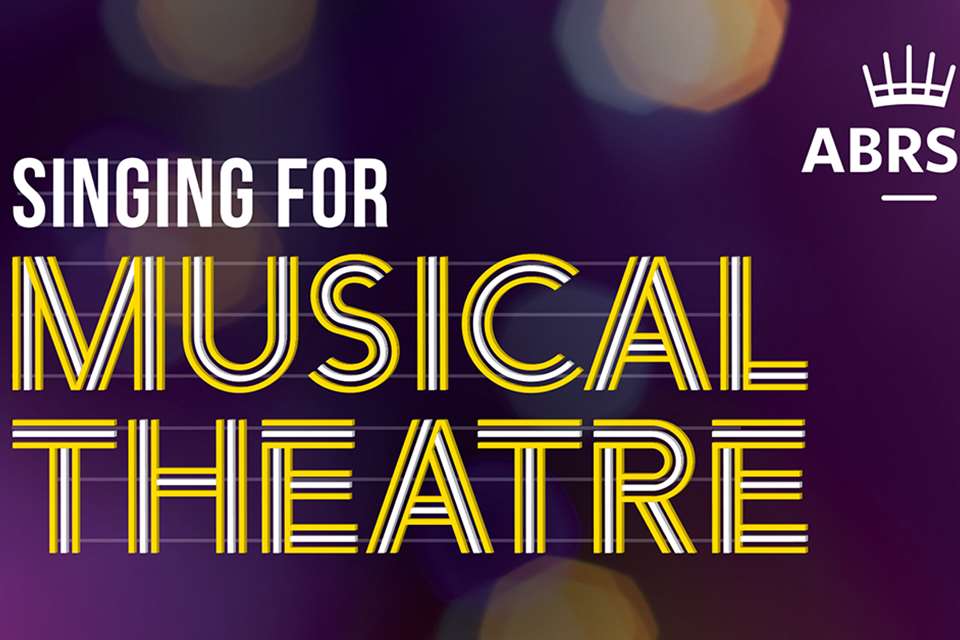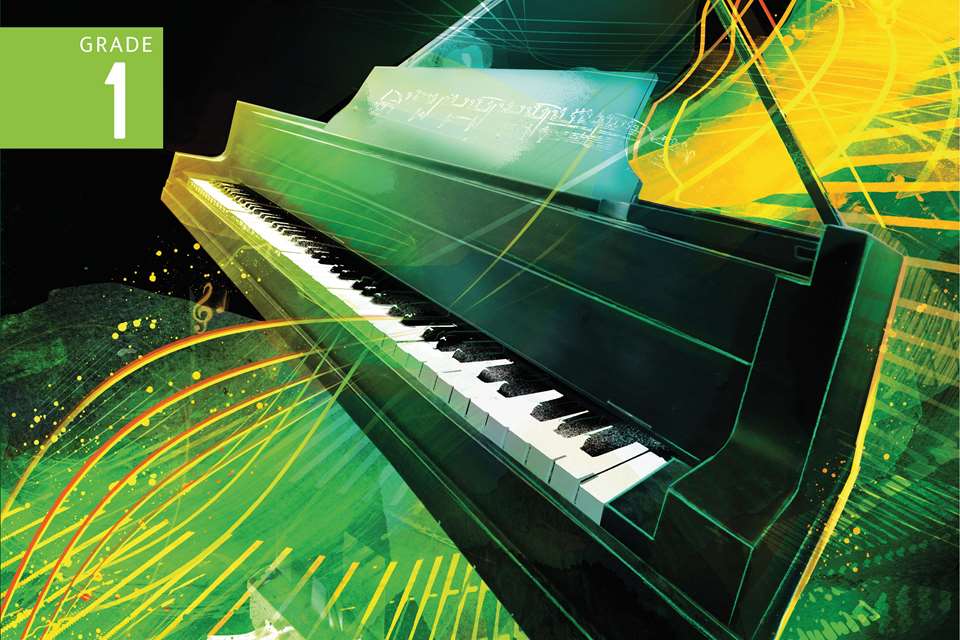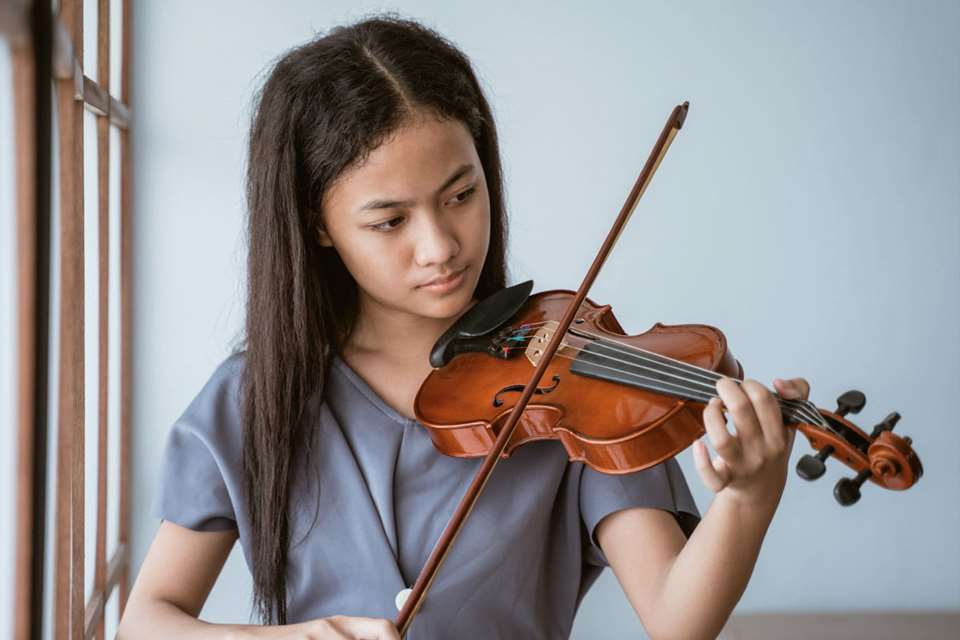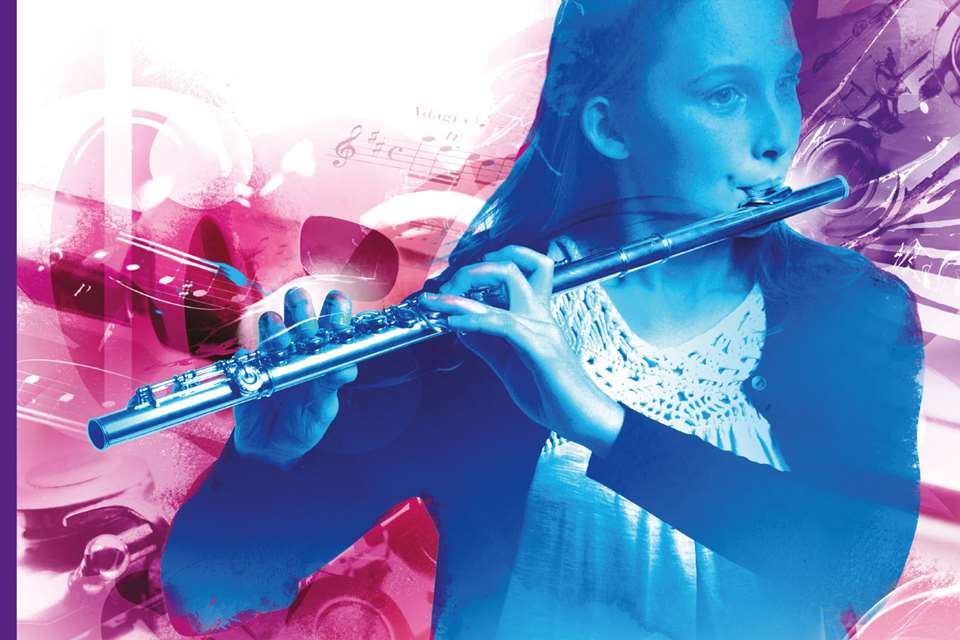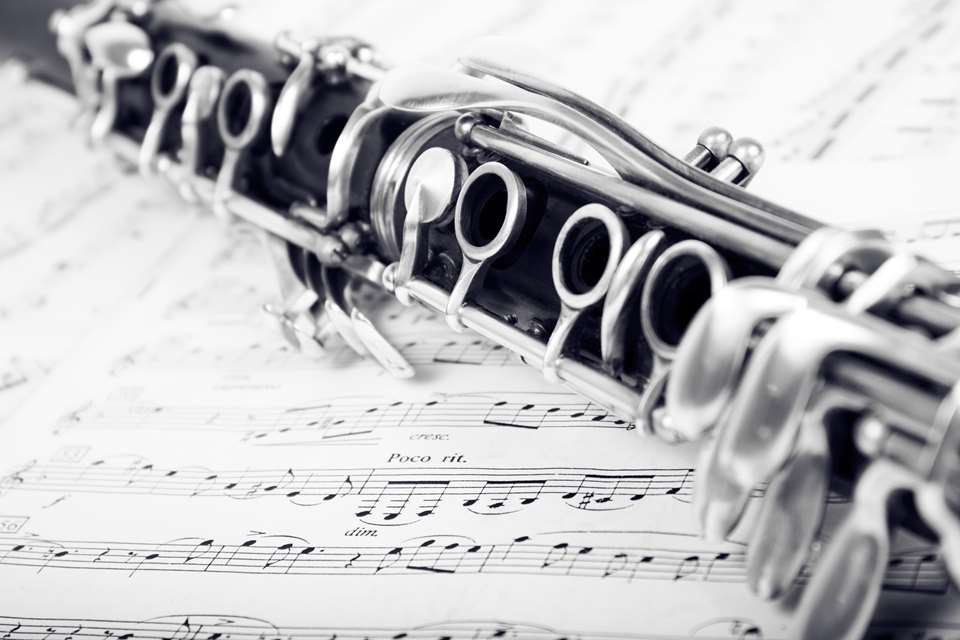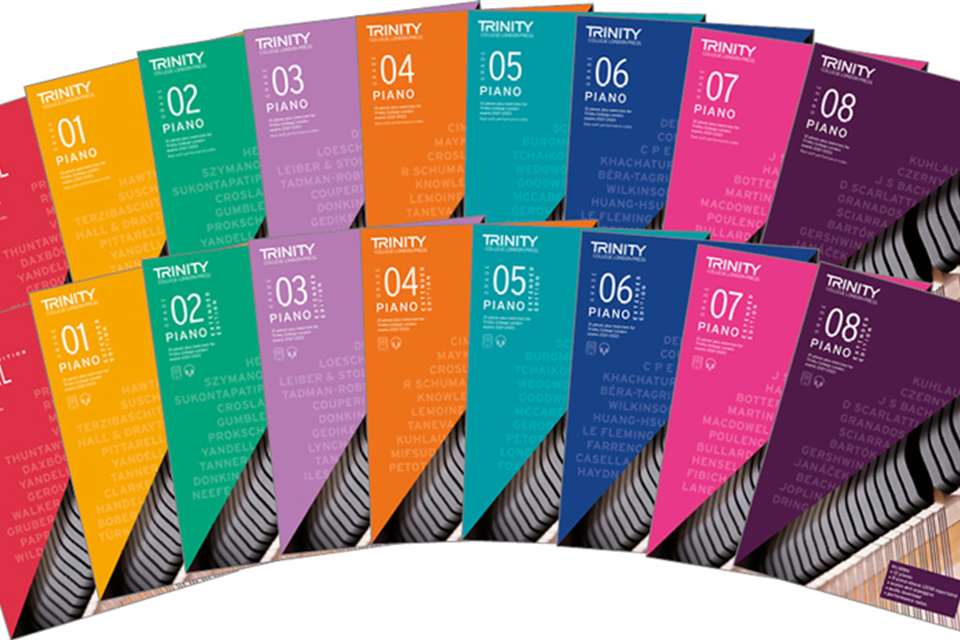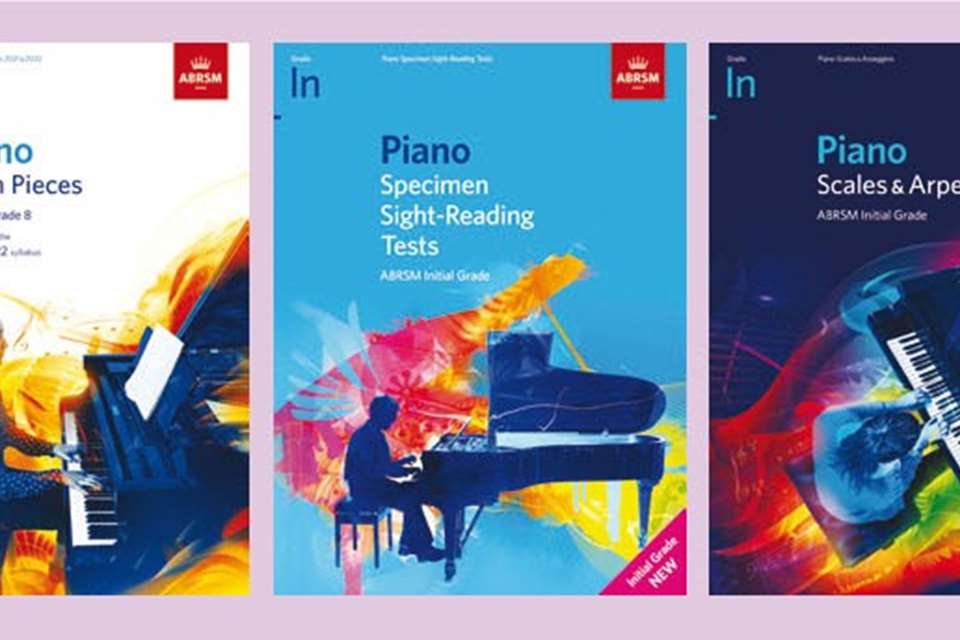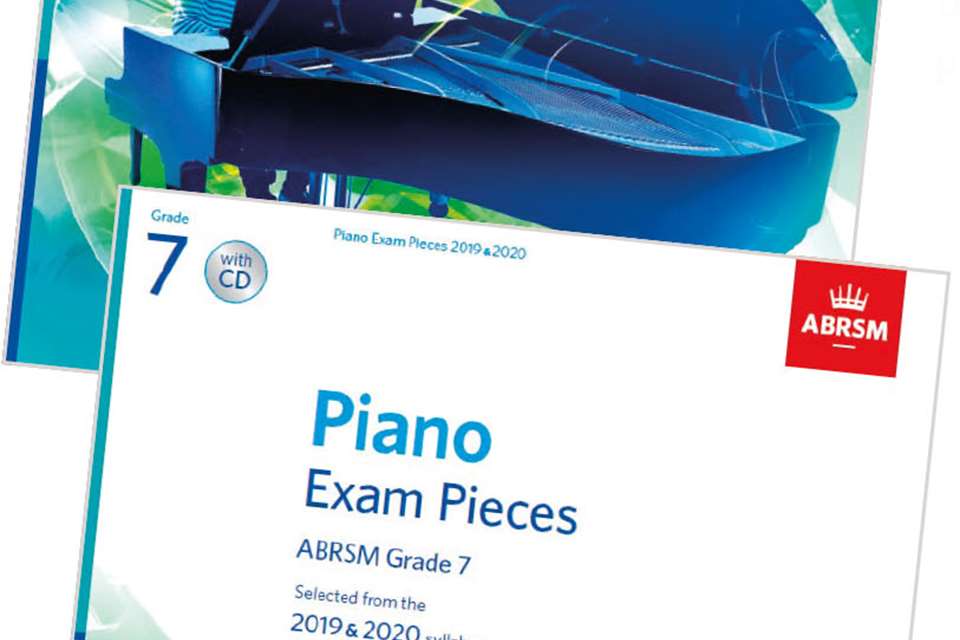Reviews: ABRSM piano syllabus 2023/24
Karen Marshall
Tuesday, November 1, 2022
Take a look at each grade of the new piano syllabus from ABRSM with Karen Marshall, including pieces from J.S.Bach, Jan Freidlin and Christopher Norton among many others.
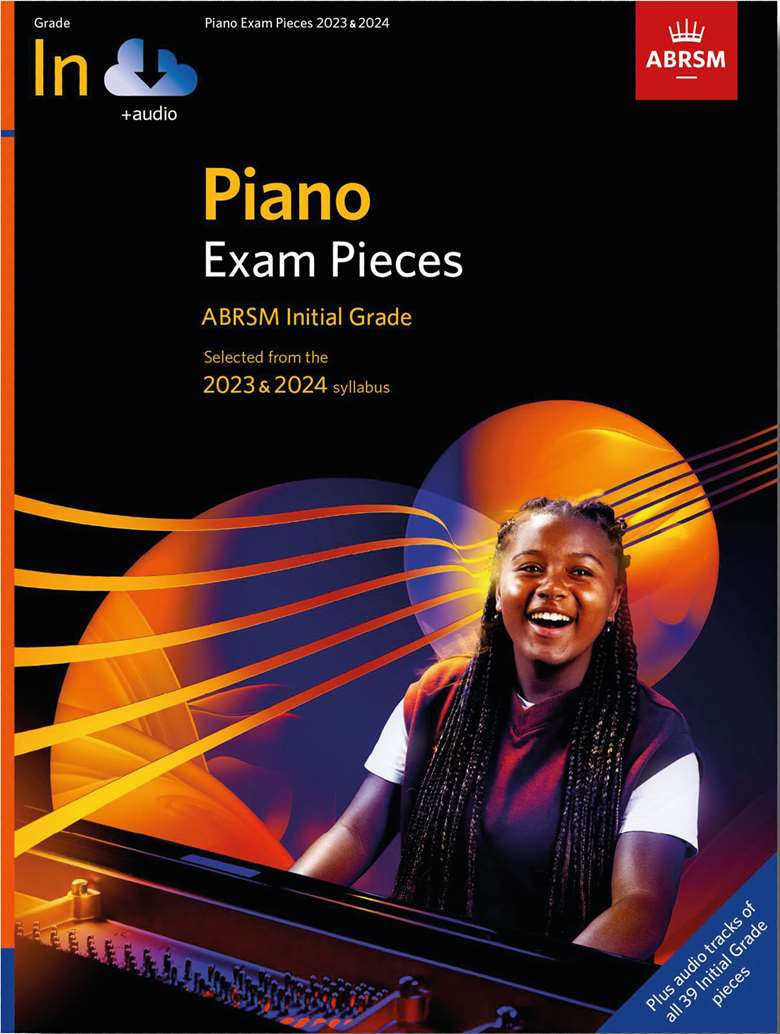
Roscoe Rutter
ABRSM launched its new piano syllabus in June for 2023/24 and received much praise. With an attractive freshly designed front cover, all pieces within the books are new and the alternative pieces included in the lists have been given a slight refresh. There are 13 pieces offered per grade for each list – List A pieces are ‘faster moving and require technical agility’, List B pieces are ‘more lyrical and invite expressive playing’, and List C pieces ‘reflect a wide variety of musical traditions, styles and characters’. This means that musical periods can appear within any list.
The lists offer fantastic diversity in terms of race and gender, as well as core cannon. I feel that Initial to Grade 2 offer the best selections in terms of accessibility for all; some grades are more appealing than others. In my own teaching, I will be changing the fingering or adding some in several pieces in the Initial Grade – it's sparse at times and occasionally does not appear to be very logical. Teachers should critically look at all fingering throughout.
Overall, this new syllabus is a job well done and ABRSM should be congratulated on its contents. There are some amazing pieces that will utterly inspire and stay within my own music teaching curriculum for many years to come.
What follows is quick tour with an A, B and C choice for each grade in detail in Initials to Grade 3 (the most popular exams), and highlights from Grades 4 to 8. For each grade I have selected a programme that I predict could be the most popular (and manageable).
Initial Grade
These lists seem more accessible than the previous Initial exam (the previous list was the first iteration of the examination). Music stays for the most part within one-hand position, which is perfect for this level.
List A: Little Playmates by Chwatal should prove a popular choice (it was on the Trinity syllabus) and is super for early chord playing. What shall we do with the drunken sailor? is an attractive arrangement by David A. T. Önaç. ‘Patterns’ by Heinrich Wohlfaht is a wonderful find and super for developing a range of articulation touches.
List B: ‘A Waltz that's a Little Melancholy’ by Schonthal will need care with the 3/4 metre but is an excellent choice for developing a left hand cantabile. Swans and Ducks by Waterman and Harewood is very accessible, and also develops the same skill as the waltz. Secret Footpath by Naomi Yandell is a good first piece for early part voicing.
List C: Haunted House by Peter Gritton features an ostinato in the left hand, a range of articulations, dynamics, and the pedal. ‘The Waltz of the Toads’ is a staccato feast (I may not pick this alongside some very similar List B pieces). ‘Jinx’ by Diane Hidy is by far the most challenging in the book and only for a select few – with hand shifts galore, clef changes, and lots of dynamic and articulation detail. However, if you have a little star who is romping through their pieces, this could be a useful piece that is nearer to Grade 1 level.
Alternatives: Any of the Piano Star book 2 pieces or Piano Star Duets are useful choices, so too is Pam Wedgwood's ‘Whirleybird’, Alan Haughton's Treading Carefully, Diabelli's Scherzo (duet) and Satie's ‘What the Little Princess Tulip Says’.
Top picks:
- List A – ‘What shall we do with the drunken sailor?’ arr. by David A. T. Önaç
- List B – Swans and Ducks by Waterman and Harewood
- List C – Haunted House by Peter Gritton
Grade 1
List A: Allegretto in C by Diabelli has been much loved by many students (and their teachers) and used across the examination boards frequently. ‘Dragonflies’ by Helyer is beautiful and is wonderful for developing finger independence. Minuet in C by Reinagle is a solid classical miniature, which is perhaps a little harder than the other two.
List B: Fresh Air by Andrew Eales develops voicing, dynamic range and enjoys a splash of pedal – repetition makes it quick to learn and it is pedagogically rich. ‘A Morning Sunbeam’ by Florence Price is a real find. It's long but packed with repetition, and is super for independence of the hands, melody and accompaniment, and playing three in a bar. The Quiet Wood by Head is a beautiful lyrical piece that's very accessible.
List C: Virginia Hall by Shruthi Rajasekar features lots of ostinato, making it rotationally accessible, and is packed with exciting articulation and melodies to highlight. Also with lots of dynamic and articulation detail, ‘Sneaky Business’ by Martha Mier is likely to be popular as it's lots of fun and very atmospheric (even if very challenging for Grade 1 with all its hand shifts). Little Whale Explores the Calm Sea is a total gem as it is so expressive. It's musically sophisticated, so take care who you select this for – they need to be able to phrase well and have good keyboard geography.
Alternatives: Gavotte in C by Hook is arguably the most accessible of the List A pieces. ‘The Chase/The Hunt’ by Gurlitt is another good alternative. ‘Fairy Tale’ by Grechaninov is a lovely alternative B piece, and for list C, do look at Gillock's Swinging Beat, Alison Mathews’ Woodland Folk Song duet, or June Armstrong's Sunlight Through the Trees.
Top picks:
- List A – Allegretto in C by Diabelli
- List B – ‘A Morning Sunbeam’ by Florence Price
- List C – Virginia Hall by Shruthi Rajasekar
Grade 2
The jump from Grade 1 to 2 is manageable with a root through that makes it accessible for many.
List A: Écossaise in G by Beethoven is a personal teaching favourite, as it practises articulation, keyboard geography and a staccato left-hand octave. The Gavotte in F by J. L. Dussek is accessible and useful for even quaver finger work. A lovely choice here (but perhaps a challenge for the grade) is the ‘Tarantella’ by Agnieszka Lasko – 6/8, pedal use, fast finger work, and dynamic/articulation range embodied. This piece could easily have also appeared in the C list.
List B: Forget-me-not Waltz by Stephen Duro is pleasant and lovely for developing balance of melody and accompaniment. ‘Lullaby’ by Stanford is my personal ‘go to’ in this list. It's beautifully crafted and a perfect first 6/8 piece which beautifully develops a legato touch. Kangding Love Song (a traditional Chinese folk song) is well arranged by Yip with a gentle Alberti bass.
List C: Very likely to prove a favourite is David Blackwell's Railroad Blues with an accessible bass line in 12 bar blues structure – it's huge fun and pedagogically rich with triplets and dotted rhythms, offering a swung rhythm that doesn't challenge too greatly! ‘Mozzie’ by Elissa Milne has hit the syllabus before and was extremely popular. If a less jazzy piece is preferred, then the lovely Daydream with triad broken chords is a perfect choice. 6/8 appears in all three lists, which is an interesting feature!
Alternatives: In List A, ‘Galop/Hopping’ by Kabalevsky has lots of repeated patterns and is great for finger work. The ‘Rustic Dance’ duet by Carse is in similar motion and is perhaps quite easy for the grade. Lots of the List B alternatives are brilliant, including ‘Sorrow’ by Bartók, ‘Farewell’ by Grechaninov, and Raindrop Reflections by Heather Hammond – a lovely duet! ‘Tango II’ by Seiber is a brilliant classic on List C.
Top picks:
- List A –Écossaise in G by Beethoven
- List B – ‘Lullaby’ by Stannard
- List C – Railroad Blues by David Blackwell
Grade 3
There is quite a jump up here in terms of difficulty.
List A: Minuet in G (Anon.) from the Anna Magdelana Bach book requires arm freedom and independence of the hands, which is not easy. ‘Vivace’ (3rd movement from this very famous Sonatina in C, Op. 36 No. 1 by Clementi) is again quite challenging but is excellent for developing even finger work in scalic passages. ‘Hansel and Gretel’ by Gąsieniec is a beautiful miniature with lots of interesting key changes and featuring a legato Alberti base (it is a surprise to see this as a List A piece).
List B: The Sad Ghost by Nancy Litten is creatively written and encourages expressive playing but is a challenge for the grade with extensive ties, syncopation, voicing and large leaps. Study in F by Loeschhorn is good standard repertoire, if a little similar in technique to the ‘Hansel and Gretel’ in List A. ‘The Song of Twilight’ is an utter gem, first appearing in the old Guildhall piano exams in the early ‘90s. It's not overly challenging apart from the pedalling, and it's pedagogically rich with a beautiful melody.
List C: ‘T-Rex Hungry’ by the late Sonny Chua is brilliant at developing articulation and expression (not easy though at that speed). ‘The Spanish Guitar’ by William Gillock is just what is says on the tin and exemplifies fantastic writing by this music educational genius. The piece offers an expression masterclass and quite a challenge too. The Entertainer by Scott Joplin, well-arranged here by David A. T. Önaç, is manageable and bound to be popular.
Top picks:
- List A – ‘Hansel and Gretel’ by Mirosław Gąsieniec
- List B – ‘The Song of Twilight’ by Nakada
- List C – The Entertainer by Scott Joplin, arr. David A. T. Önaç
Grade 4
The offering here is not quite as appealing as the previous selections but contains some good core repertoire, even if, again, it represents a bit of a leap in terms of difficulty.
List A: The ‘Presto’ by Pescetti is extensive at three pages but fits well under the hands and is very attractive. The ‘Movement de valse’ by Louise Farrenc is not one I would select within List A – she has written many others that may have been more popular but it's still lovely repertoire. The Allegro in F by Handel is the most accessible here.
List B: ‘Billie's Song’ by Valerie Capers has appeared on a number of exam board lists and is a lovely jazzy piece. I think it will prove more popular than the other two available: ‘Idylle’ by Cécile Chaminade and ‘La nouvelle poupée’ by Tchaikovsky.
List C: Bartók's ‘Pentatonic Tune’ is fun and an articulation feast. ‘Ninette's Musette’ by George Nevada is a solid choice, but I think Florence Price with her fabulous Ticklin’ Toes could be an exam room winner. Also appearing recently in London College of Music Exams’ piano syllabus, it's a ragtime wonder and very popular with students.
There are also some real showstoppers on the alternative lists at this Grade, including J. F. F. Burgmüller's Ballade, Heather Hammonds’ ‘Once Upon A Frozen Winter’, Arvo Pärt's stunning Für Anna Maria, and a super arrangement of ‘In the Hall of the Mountain King’.
Top picks:
- List A – Ballade by J. F. F. Burgmüller
- List B – ‘Billie's Song’ by Valerie Capers
- List C – Ticklin’ Toes by Florence Price
Grade 5
The lists offer a gentle move up to this pivotal grade.
List A: The contrapuntal work here by Cimarosa (Allegro) is the only Baroque piece available in the album. It's trickier than the Toccato No. 3 by Leo, which is packed with patterns and is easy to learn. Haydn's ‘Minuet and Trio’ is well worth the study and ‘Jester's Jig’ by Chee-Hwa Tan is huge fun.
List B: Perfect for part playing development is ‘Minnelied’ by H. Hofmann and ‘Wind in the Willows’ by Bernadette Marmion is very accessible – do also consider Schumann's timeless ‘Von fremden Ländern und Menschen’ from his Opus 15.
List C: ‘In the Groove’ by Mike Cornick is not new to an exam list and is always a popular choice with its jazz harmonies and rhythms. The lovely A Distant Star in the Stillness by David A. T. Önaç will also appeal (you need a good hand span and confidence with keyboard geography). From the alternatives, do check out The Sea is Angry by Alwyn; and Elegy for the Artic by Einaudi is very popular with students, as is ‘Love Theme’ by Catherine Rollin – it's great for pedalling and developing expression.
Top picks:
- List A – ‘Minuet and Trio’ by Haydn
- List B – ‘Von fremden Ländern und Menschen’ by Schumann
- List C – ‘In the Groove’ by Mike Cornick
Grade 6
The syllabus offers a super collection for this grade.
List A: Giga in D by Elisabetta de Gambarini is an attractive, accessible choice, while the Allegro from Kahlau's Sonatina in C, Op. 20 No. 1 is a wonderful foundation piece for future classical sonata playing. Extremely attractive but packed with pedagogy, it would be my first choice on the list. The timeless Solfeggietto in C minor by C. P. E. Bach is available in the alternatives.
List B: ‘Venetianisches Gondellied’ from Mendelssohn's Lieder ohne Worte (Songs without words) again develops an advancing pianist and students love it. Worth looking at in the alternatives is ‘Prayer of the Matador’ by Dello Joio – it's a superb easy choice notation wise, although it does require sensitive interpretation. In my opinion, List B isn't quite as appealing as the others.
List C: Players are spoilt for choice! A sophisticated contemporary gem is ‘The Child that is Born on the Sabbath Day’ by R. R. Bennett – it's not easy though. The expressive and haunting ‘Indigo Moon’ by Elissa Milne and the Jazz Exercise No. 2 by O. Peterson are both likely to be popular. Head to the alternatives for Paul Harvey's wonder that is Rumba Toccata.
Top picks:
- List A – Allegro (1st movt from Sonatina in C, Op. 20 No. 1) by Kuhlau
- List B – ‘Venetianisches Gondellied’ by Mendelssohn
- List C – Rumba Toccata by Paul Harvey
Grade 7
List A: There is excellent foundational material here, including a beautiful ‘Tempo di minuetto’ by Marianne von Martínez. Other pieces worth exploring include ‘Allegro moderato’ from Haydn's Sonata in B minor or Paradies’ Allegro.
List B: ‘At the Evening Window’ by Jan Freidlin is a beautiful lyrical play. However, my favourite here is ‘Calme du soir’ by Moszkowski – although it is very challenging, the harmony is stunning. Timeless pieces on the List B alternatives include Mélodie by Hensel, ‘The Little Shepherd’ by Debussy, ‘Berceuse’ by Ilyinsky, and Liszt's Consolation No. 5 in E.
List C: The fun and jazzy ‘New Kid’ by Christopher Norton is likely to be an extremely popular choice here. There is also an atonal piece called White Light Chorale by Param Vir, which is an interesting play. From the alternatives, do check out Grovlez's ‘Chanson du chasseur’, Piazzolla's lyrical Milonga delángel, Grieg's ‘Butterfly’, and Norton's ‘Pop Bossa’.
Top picks:
- List A – ‘Tempo di minuetto’ by Marianne von Martínez
- List B – ‘Berceuse’ by Ilyinsky
- List C – ‘New Kid’ by Christopher Norton
Grade 8
Apart from the odd piece, this a collection of music I have taught for many decades. It's a very sound selection that is also accessible for the most part. If you are desperate to do some contrapuntal work and a sonata movement, your only option is the second movement of Beethoven's Pathétique in List B along with a Prelude and Fugue in List A. I do feel this is a weakness in the selection.
List A: Bach's Prelude and Fugue in B flat requires a good rotary action in the Prelude and appropriate articulation in the Fugue (do point out to your student that it's three voices – oddly, the score doesn't mark this). The Mozart Allegro is an eight-page marathon packed with genius musical writing – a showstopper.
List B: Ètude in D flat by Louise Farrenc is a good example of this gifted composer's work. Tchaikovsky's ‘Juin: Barcarolle’ is also a timeless beauty. As mentioned above, do also consider Beethoven's ‘Adagio cantabile’ (2nd movt from Sonata in C minor ‘Pathétique’, Op. 13).
List C: ‘Rumores de La Caleta (Malagueña)’ by Albéniz is simply fabulous – it is so characterful and exciting. Or try the Arabesque No. 2 by Debussy, or Rêverie by the same composer. Over the Bars by J. P Johnson is one of the rare jazz pieces on the whole syllabus. It's not for a small hand but is a fun, ragtime, impressive play.
Top picks:
- List A – Prelude and Fugue in B flat by J. S. Bach,
- List B – ‘Adagio cantabile’ (2nd movt from Sonata in C minor ‘Pathétique’, Op. 13) by Beethoven
- List C – ‘Rumores de La Caleta (Malagueáa)’ by Albéniz


